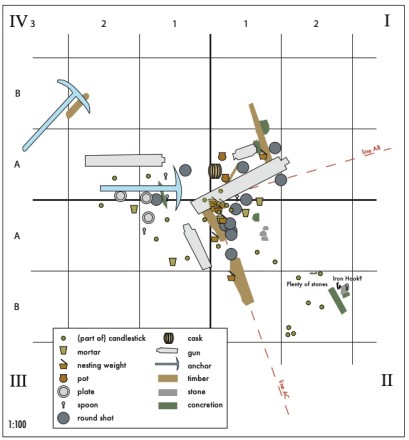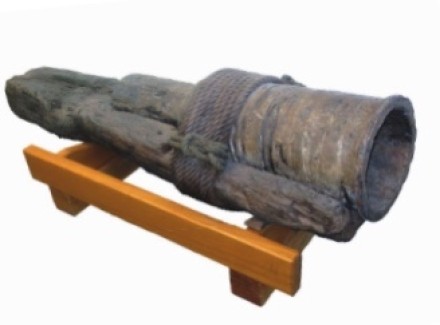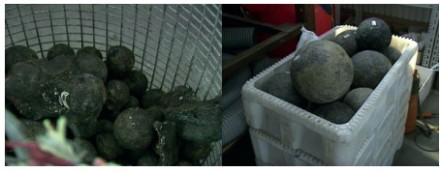History
The ' Zeebrugge wreck' , was found off the Belgian coast. Based on the analysis of artefacts from the wreck it appears that the ship sank in or after the year 1521’.
The excavation of the Zeebrugge site was spread over four field seasons (1991, 1992, 1993 and 1994). As many as seven cannon of different types, mostly breech-loading wrought-iron pieces, appear to have been recovered from the wreck site.

The ' Zeebrugge wreck' , was discovered off the Belgian coast near Zeebrugge.
Based on the analysis of artefacts from the wreck it appears that the ship sank in or after the year 1507, and possibly in or after the year 1521. in or after the year 1521’. (Lettany, 94)
The excavation of the Zeebrugge site was spread over four field seasons (1991, 1992, 1993 and 1994). As many as seven cannon of different types, mostly breech-loading wrought-iron pieces, appear to have been recovered from the wreck site.
Origin
To determine the place of departure, we should take a look at the actual origin of the cargo. Most finds were produced in the Low Countries or Southern Germany. The ship originated probably from Antwerpen
Cargo
The assemblage of fi nds recovered from the Zeebrugge wreck provides a unique insight in the maritime trade in the early 16th century. The many objects, mainly belonging to the ship’s cargo, seem to be an example of the many goods traded in Antwerp at that time. The cargo of this particular wreck is rather prestigious, with several high quality objects, in some cases nicely decorated.
Cauldrons of diff erent sizes were transported nested into one another, with straw placed in-between the objects to prevent damage.
At least some of the knife handles were wrapped in paper during transport. The many candlesticks recovered from the Zeebrugge wreck provide new insights in regard to trade and production.
as large quantities candlestick stems without bases were found, indicating these products would be finished in a local workshop at their destination
Canons
In addition to the artillery pieces, a large number of stone and iron shot were found and raised. The only gun that is known to have survived is a wrought iron cannon, still resting on its original wooden bed, which is of very similar form as the Marstrand canon , but larger,. It is 115 centimetres long with a bore at the muzzle of 29 centimetres and like the Marstrand gun, has a smaller diameter powder chamber.

The surviving bed consists of a solid piece of oak timber to which the gun was lashed with ropes. The original ropes were still in place when the cannon was found but have been replaced with modern ones
Description

Shots from the wreck , left iron balls, to the right stone balls.
References
- Dirk en Tomas Termote (2009).
Schatten en Scheepswrakken. Boeiende onderwaterarcheologie in de Noordzee.
Davidsfonds Leuven. - Rik Lettany (2017).
Een vracht voor de nieuwe wereld? De vergeten lading van het Zeebrugge-wrak.
Ex Situ 15.
pp 18-19. - Hendrik Lettany.
The Zeebrugge Shipwreck A forgotten early sixteenth-century merchantman discovered off the Belgian co.